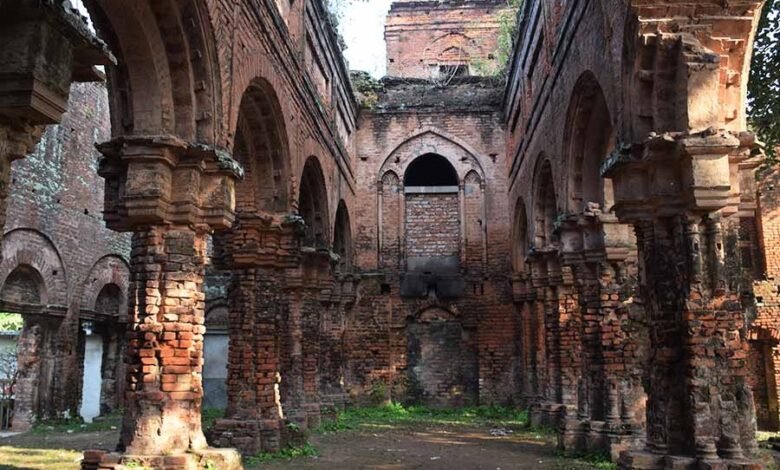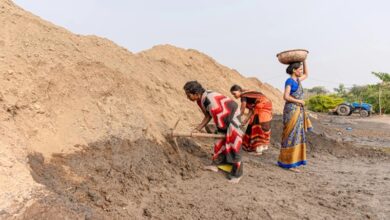Rediscovering the Ancient Port City of Tamluk: A Historical Gem Near Kolkata

Agnibeena Ghosh/23rd June 2024
Located approximately 85 kilometers southwest of Kolkata, on the banks of the Rupnarayan River, lies the town of Tamluk. Serving as the headquarters of the East Midnapore district, this municipality is home to nearly a million residents. Beneath the facade of a typical Indian small town lies a rich, ancient history that traces back to the era of the Mahabharata. Scholars widely believe that modern Tamluk is what remains of the ancient port city of Tamralipta.
The name ‘Tamralipta’ is steeped in myth and legend. Early Vaishnava texts suggest the name originated from an interaction between the Sun god and Lord Krishna. According to the legend, the Sun god, upon seeing Krishna in an intimate moment with his gopis, blushed so deeply that his face turned copper-colored (tamra being the Sanskrit word for copper). In the Mahabharata, it is mentioned that the Pandavas’ Ashwamedha horse was intercepted by the prince of Tamralipta, leading to a battle that eventually saw the kingdom ally with the Pandavas.
While these tales add a layer of mystique to Tamralipta’s history, there is also substantial scientific evidence confirming the area’s ancient origins. The nearby Ghatshila mines have been producing rich copper for over 2,500 years, and archaeological excavations have unearthed remnants of a civilization dating back just as long. The Bargabhima Mandir, a famous Kali temple, is believed to have been built by the Pandava prince Bhima. Local traditions continue to honor Bhima with an annual fair, Bhim Mela, held in February or March.
Under King Tamradhwaja’s rule, Tamralipta reached its zenith. The kingdom thrived, fueled by its rich copper mines. During this time, the Rupnarayan River likely flowed directly into the Bay of Bengal, facilitating large sea-faring ships to dock at the port. These ships transported copper, silk, cotton, indigo, and earthenware to destinations like Ceylon, Southeast Asia, and beyond. One of Emperor Asoka’s primary goals during his campaign against Kalinga was to seize control of Tamralipta. A great stone road connected Pataliputra, the Mauryan capital, to Tamralipta, ensuring the smooth transport of goods to the port.
From the 3rd century BCE, Tamralipta reigned as a premier port town in Asia. It was not only a hub for trade but also a gateway for spreading Buddhism. Asoka’s children, Mahendra and Sanghamitra, are said to have sailed from Tamralipta to Ceylon and Suvarnabhumi, carrying seeds of the Bodhi tree and Buddhist scriptures. The Mahavamsa, an epic of Sri Lanka, records this significant journey, highlighting Tamralipta’s importance.
The Jataka tales frequently reference Tamralipta as a launch point for voyages to Southeast Asia, spreading Buddhist teachings. Renowned Chinese travelers like Fa-Hien, Hiuen Tsang, and Itsing documented Tamralipta as a major port and a center of Buddhist learning. During the Gupta era, the port’s significance grew, with ships traveling from India to Arabia, Africa, and the Mediterranean. Fa-Hien, who visited in the 5th century CE, described Tamralipta as having numerous monasteries and a vibrant Buddhist community.
However, by the late 7th century CE, Tamralipta began to decline. The reasons for its fall are unclear, but the disintegration of the Gupta Empire and shifting river courses likely played significant roles. As the Rupnarayan River changed its course, the port became less navigable, and Tamralipta’s glory faded into obscurity.
For centuries, Tamralipta was forgotten until the late 19th century when Bengali scholar Gour Das Bysack’s excavations brought its history back into the spotlight. Despite initial neglect by the Archaeological Survey of India, further excavations in the 1950s and 1970s revealed Roman amphorae and Greco-Roman coins, underscoring Tamralipta’s extensive trade connections.
Today, little remains of this once-great port city, with most artifacts housed in a local museum. Yet, standing on the banks of the Rupnarayan River, one can still imagine the bustling activity of ancient Tamralipta, a beacon of trade and learning in its time.






